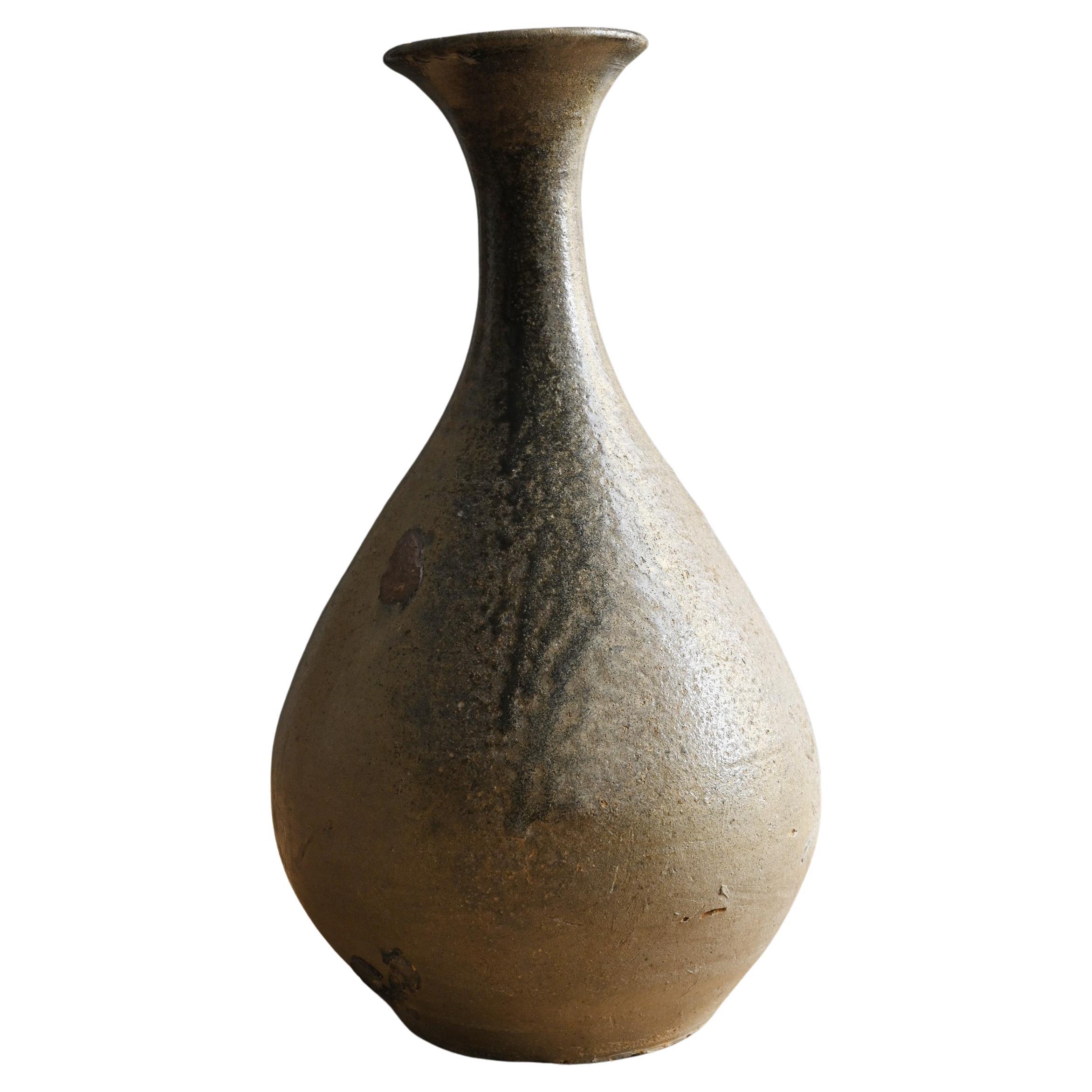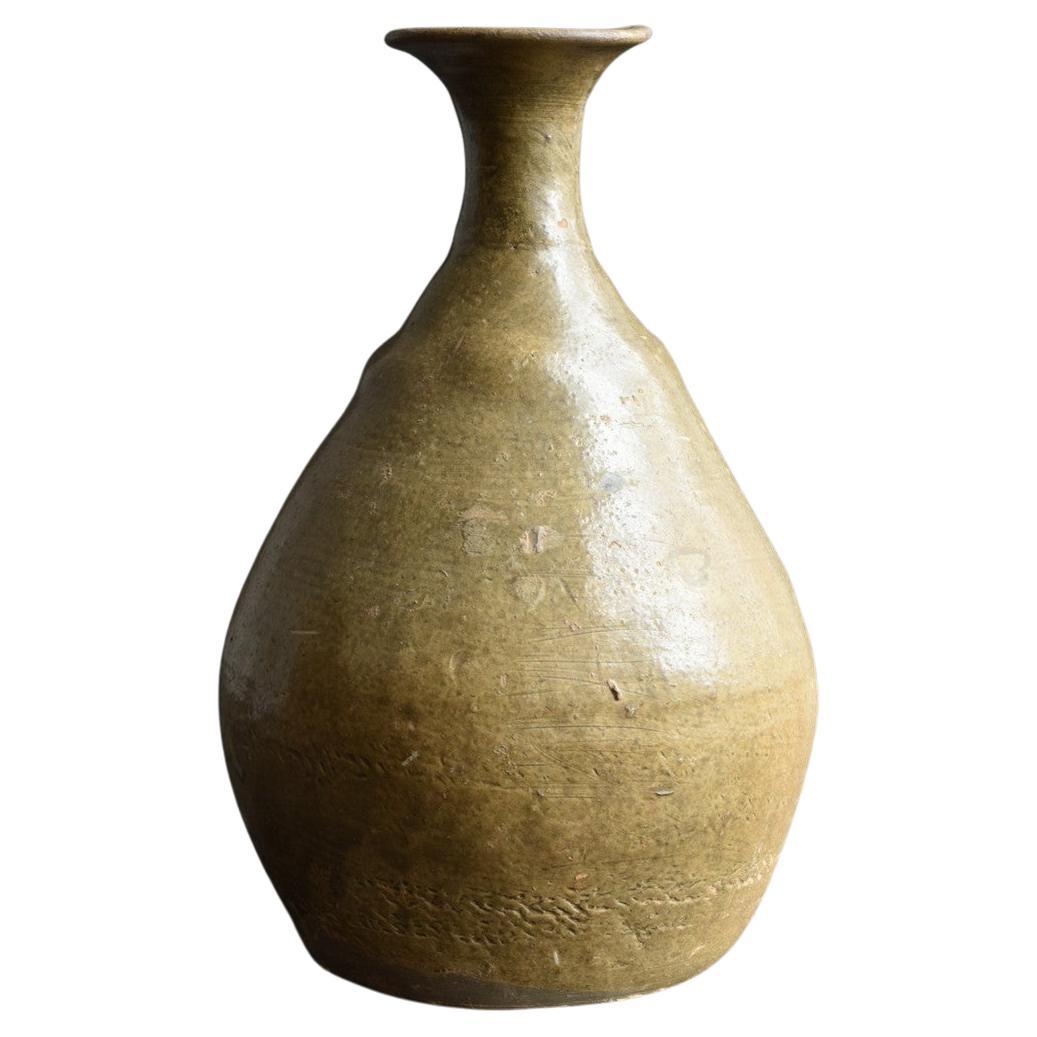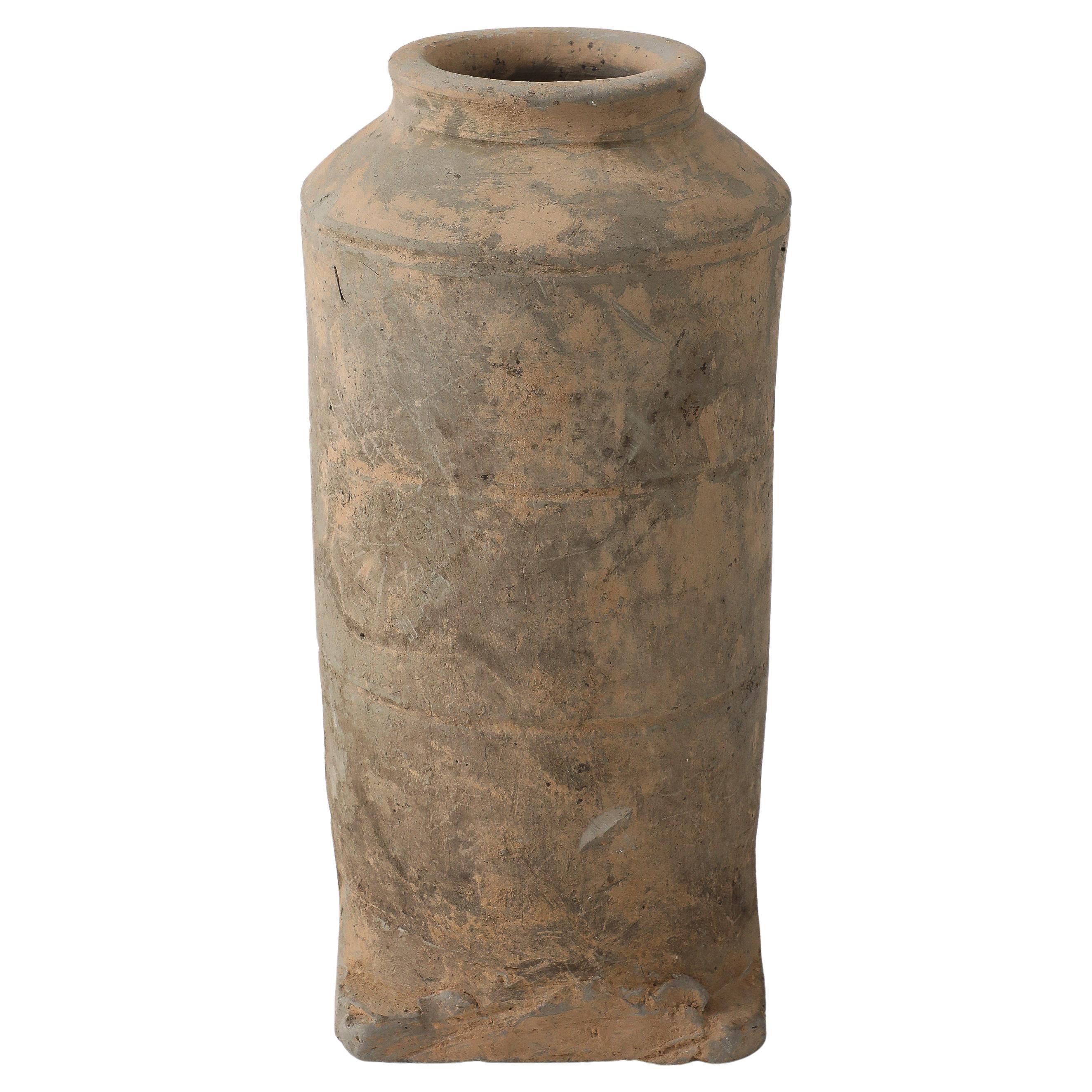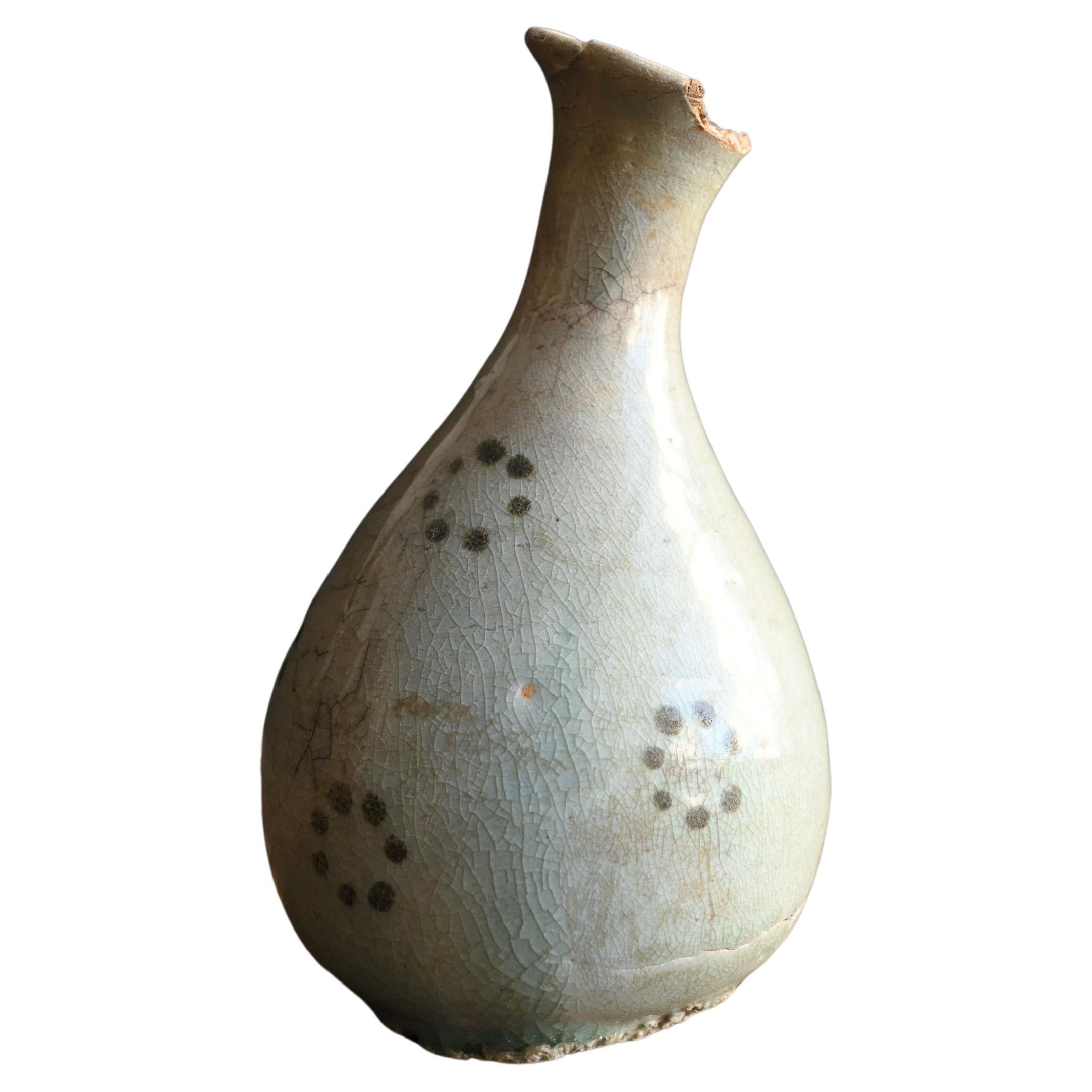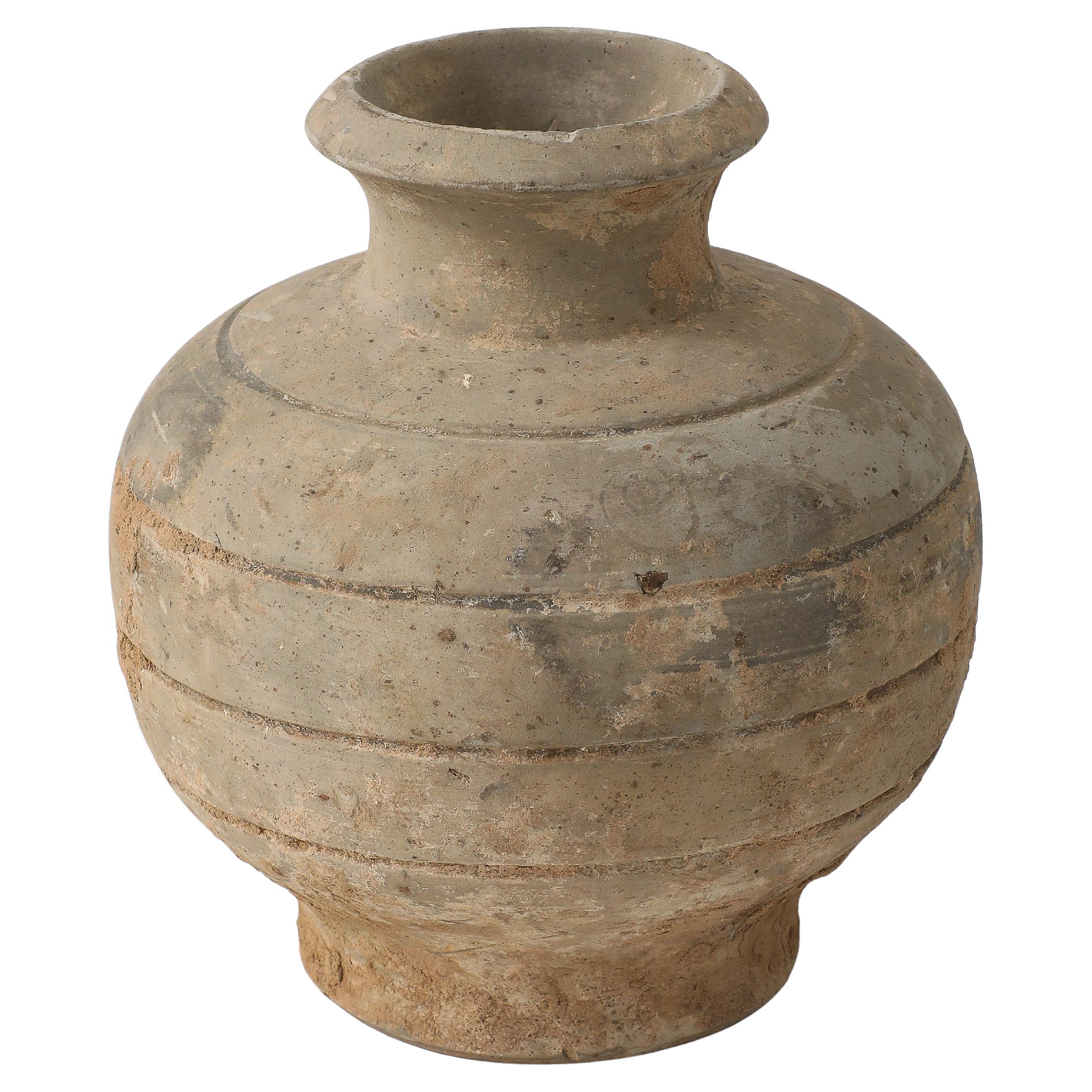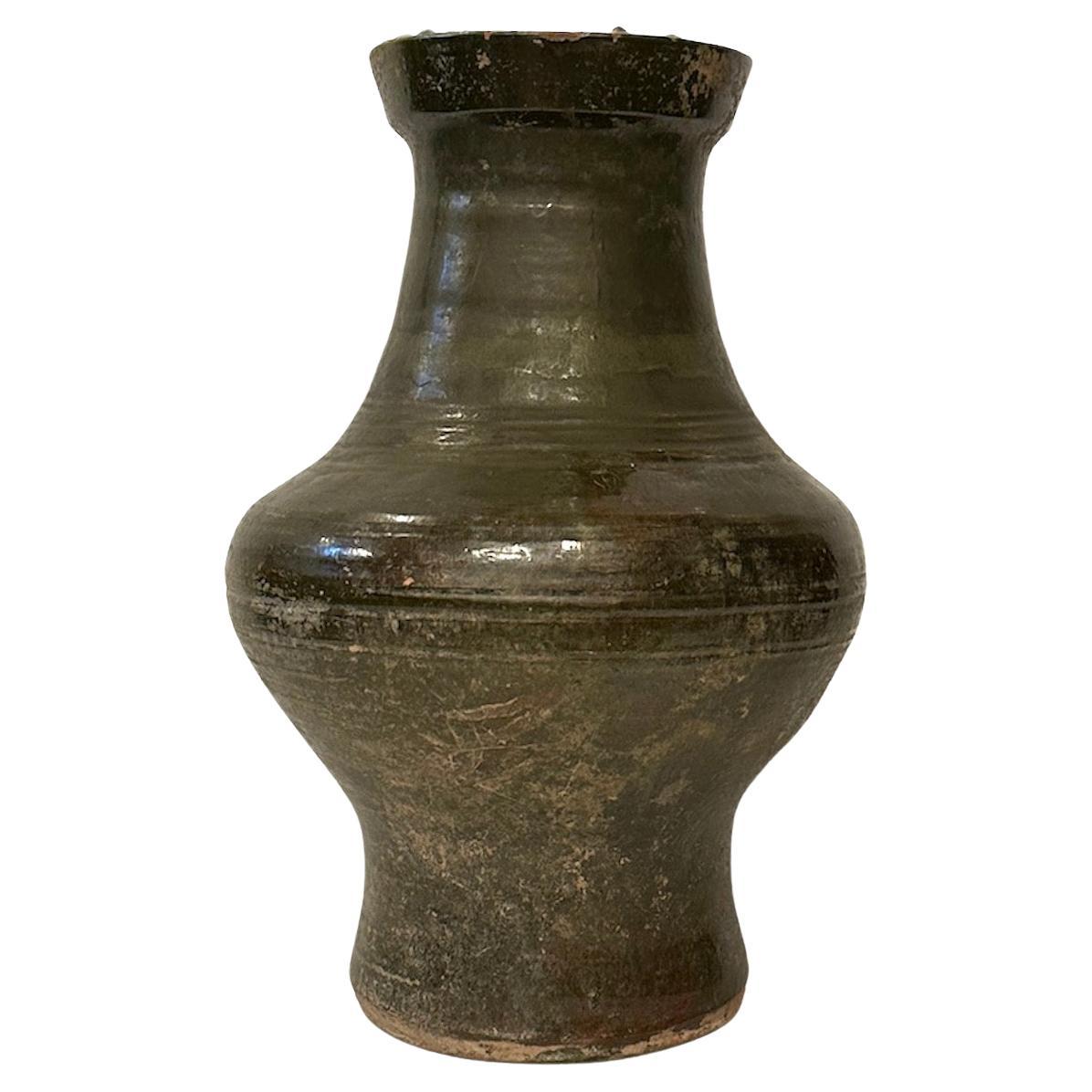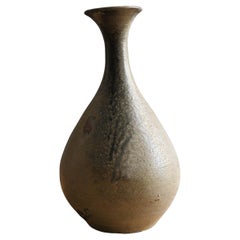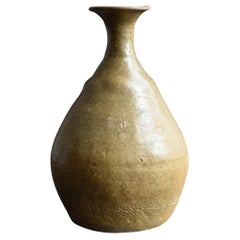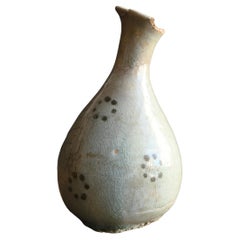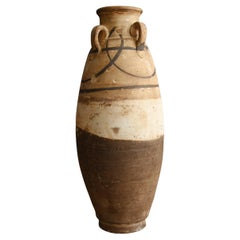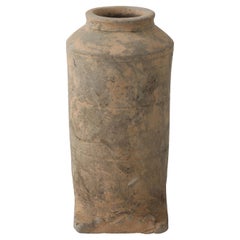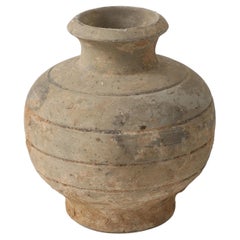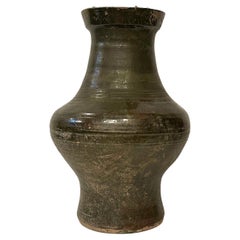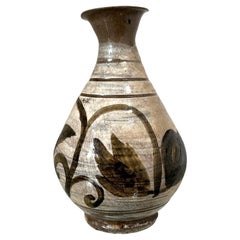Items Similar to Korean antique ceramic vase / Goryeo dynasty / 13th century / “maebyeong”
Want more images or videos?
Request additional images or videos from the seller
1 of 20
Korean antique ceramic vase / Goryeo dynasty / 13th century / “maebyeong”
$1,000
£755.11
€870.18
CA$1,411.43
A$1,556.06
CHF 814.08
MX$19,090.01
NOK 10,247.69
SEK 9,583.21
DKK 6,498.52
About the Item
This is a ceramic piece produced on the Korean Peninsula during the late Goryeo dynasty, around the 13th century. It features the classical shape known as a “maebyeong” (梅瓶), a traditional vessel form unique to East Asian ceramics.
"Mae" (梅) means plum, and "byeong" (瓶) means bottle or vase.
The maebyeong is characterized by a small mouth, a rounded shoulder, and an elegant S-shaped silhouette that gently curves inward before flaring out again at the base. The name “maebyeong” is said to derive either from the resemblance of its form to the slender trunk of a plum tree, or from its suitability for holding single branches of plum blossoms.
This particular piece inherits the quintessential characteristics of the maebyeong, with a modest yet resolute presence. While originally inspired by Song dynasty ceramics from China, Goryeo artisans infused the form with their own distinct sensibility, elevating it to a shape that embodies simplicity and quiet beauty.
The surface is covered in what is known as “black glaze,” rich in iron content. However, the glaze is not uniformly black. Instead, it presents a subdued gradation of muted gray-green tones, with variations and subtle fluctuations that reflect the natural flow of glaze and kiln atmosphere during firing. Notably, you can see streaks of glaze dripping from the shoulder to the foot, creating an organic and poetic landscape across the surface.
The clay body beneath shows a grayish tone, the result of a traditional firing technique called “reduction firing.” This method reduces oxygen within the kiln, causing a chemical reaction that alters the appearance of the iron in the clay. The result is a unique coloration and texture—an expressive surface that captures the intimate dialogue between earth and flame. It is a technique that speaks to the hands-on, organic spirit of traditional craftsmanship.
Measuring 23.5 cm in height and 10.5 cm in diameter, the vase has a presence that is both substantial and easily manageable. It brings a sense of calm and stillness to any space, whether placed in a traditional Japanese room or a modern interior. Water retention has been tested with two-thirds of the vase filled for several hours, and no leakage was observed. Still, we recommend thoroughly drying the interior after use to maintain its condition over time.
The greatest charm of this piece lies in the contrast between its rough, unrefined texture—embodying the aesthetic of wabi-sabi—and the graceful, refined contour of its form. It avoids any hint of flamboyance, instead honoring stillness, simplicity, and the beauty of empty space. This quiet design invites the viewer into a deeper sense of tranquility and contemplation.
A wooden storage box is included, making it ideal not only for safekeeping but also as a thoughtful gift. A similar design is documented in art reference books, lending this piece both aesthetic and historical significance. Priced accessibly to help more people discover the beauty of antique ceramics, this is a vase that deserves to be quietly placed in your living space—where it will resonate with a deep, meditative calm.
Dimensions: Diameter 10.5 cm × Height 23.5 cm
Weight: 681g
Item No.: PO361
- Dimensions:Height: 9.26 in (23.5 cm)Diameter: 4.14 in (10.5 cm)
- Style:Other (Of the Period)
- Materials and Techniques:
- Place of Origin:
- Period:
- Date of Manufacture:13th century
- Condition:There is a small chip on the edge of the tip, but I don't think it will affect the viewing experience.
- Seller Location:Sammu-shi, JP
- Reference Number:1stDibs: LU5487245944062
About the Seller
5.0
Platinum Seller
Premium sellers with a 4.7+ rating and 24-hour response times
Established in 2015
1stDibs seller since 2020
1,624 sales on 1stDibs
Typical response time: 7 hours
- ShippingRetrieving quote...Shipping from: senzoku, Japan
- Return Policy
Authenticity Guarantee
In the unlikely event there’s an issue with an item’s authenticity, contact us within 1 year for a full refund. DetailsMoney-Back Guarantee
If your item is not as described, is damaged in transit, or does not arrive, contact us within 7 days for a full refund. Details24-Hour Cancellation
You have a 24-hour grace period in which to reconsider your purchase, with no questions asked.Vetted Professional Sellers
Our world-class sellers must adhere to strict standards for service and quality, maintaining the integrity of our listings.Price-Match Guarantee
If you find that a seller listed the same item for a lower price elsewhere, we’ll match it.Trusted Global Delivery
Our best-in-class carrier network provides specialized shipping options worldwide, including custom delivery.More From This Seller
View AllKorean antique pottery vase / Goryeo dynasty / 13th to 14th century
Located in Sammu-shi, Chiba
There is a long crack that has been repaired.
Detailed images 14th and 15th.
There is no water leakage, but please refrain from leaving water in it for more than two days.
Also, be s...
Category
Antique 15th Century and Earlier South Korean Other Vases
Materials
Pottery
Korean Very Old Pottery Vase/10th Century to 14th Century/Goryeo Dynasty
Located in Sammu-shi, Chiba
This is Korean pottery made between the 10th century and the 14th century.
At that time, it was called the Goryeo Dynasty, and various objects such as metalwork and pottery were mad...
Category
Antique 15th Century and Earlier South Korean Other Vases
Materials
Pottery
Korean antique pottery vase/rare design pottery/Joseon Dynasty/15th century
Located in Sammu-shi, Chiba
I would like to introduce Korean antique pottery with a very rare design.
This is a vase-shaped container made in the early Joseon Dynasty of Ko...
Category
Antique 15th Century and Earlier South Korean Other Vases
Materials
Pottery
Chinese antique pottery wabi-sabi vase/12th-14th century/Cizhou kiln
Located in Sammu-shi, Chiba
This is a vase believed to have been fired at the Cizhou kilns in northern China. Known for their distinctive white-slip base and bold black glaze decoration, the Cizhou kilns flouri...
Category
Antique 15th Century and Earlier Chinese Other Vases
Materials
Pottery
Japanese Antique Pottery Jar 15th-16th Century/ Wabi-Sabi Jar/Tokoname Vase
Located in Sammu-shi, Chiba
It is a very old jar in Japan.
This is a pottery called Tokoname ware.
Tokoname is a kiln located in Aichi prefecture, Japan.
It is said to have originated around the 12th century.
A...
Category
Antique 16th Century Japanese Other Vases
Materials
Pottery
Japanese Beautiful Antique Pottery/Sue Pottery/Around 9th Century/Excavated Vase
Located in Sammu-shi, Chiba
We have an aesthetic sense peculiar to Japanese people.
And we introduce the unique items that only we can do, the route of purchasing in Japan, the experience value so far, and the ...
Category
Antique 15th Century and Earlier Japanese Other Vases
Materials
Pottery
You May Also Like
Han Dynasty Earthenware Vase, stamped, export label
Located in Brooklyn, NY
Han Dynasty Earthenware Vase
Category
Antique 15th Century and Earlier Chinese Han Vases
Materials
Earthenware
Han Dynasty Earthenware Vase
Located in Brooklyn, NY
Han Dynasty Earthenware Vase
Category
Antique 15th Century and Earlier Chinese Han Vases
Materials
Earthenware
Late 19th Century Han Style Glazed Earthenware Vase
Located in Los Angeles, CA
Hand-thrown earthenware, glazed Han style vase.
Category
Antique Late 19th Century Chinese Han Vases
Materials
Earthenware
$5,900 / item
Korean Glazed Ceramic Vase Buncheong Ware Joseon Dynasty
Located in Atlanta, GA
A small antique Korean Buncheong stoneware vase from early Joseon Dynasty circa 16th century. The vase is of a classic pear form with a waisted neck, a flared mouth and a ringed base...
Category
Antique 16th Century Korean Other Ceramics
Materials
Ceramic
Japanese Antique Shigaraki ware 17th Century / Pottery Vase Wabisabi
Located in Chōsei District Nagara, JP
This is an old pottery pot made in Japan.
It is a very old pot believed to have been made in the 17th century, early Edo period, and is called Koshigaraki in Japan.
Koshigaraki refe...
Category
Antique 17th Century Japanese Edo Vases
Materials
Pottery
Tall Korean Ceramic Storage Jar Joseon Dynasty
Located in Atlanta, GA
A Korean ceramic storage jar circa 18th century of Joseon Dynasty. The jar is of a classic Maebyong form (known in Chinese as Plum Vase or Meiping...
Category
Antique 18th Century Korean Other Ceramics
Materials
Ceramic
More Ways To Browse
Antique Alter
Korean Traditional Furniture
Chinese Green And Black Ceramic
Korea Box
Wooden Storage Boxes
Green Antique Trunk
Antique Wooden Storage Box
Song Dynasty Ceramics
13th Century Vase
Iron Bottle Tree
Loetz Pair
Maija Grotell
Majolica Dragon
Mayan Pottery
Mermaid Pottery
Moser Amber
Murano Fan Vase
Murano Glass Fan Vase
